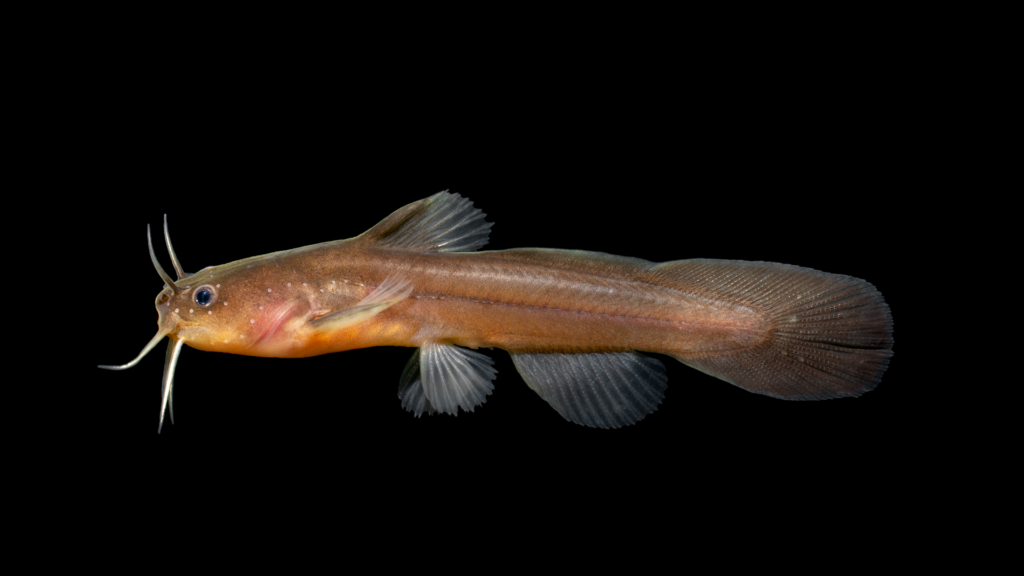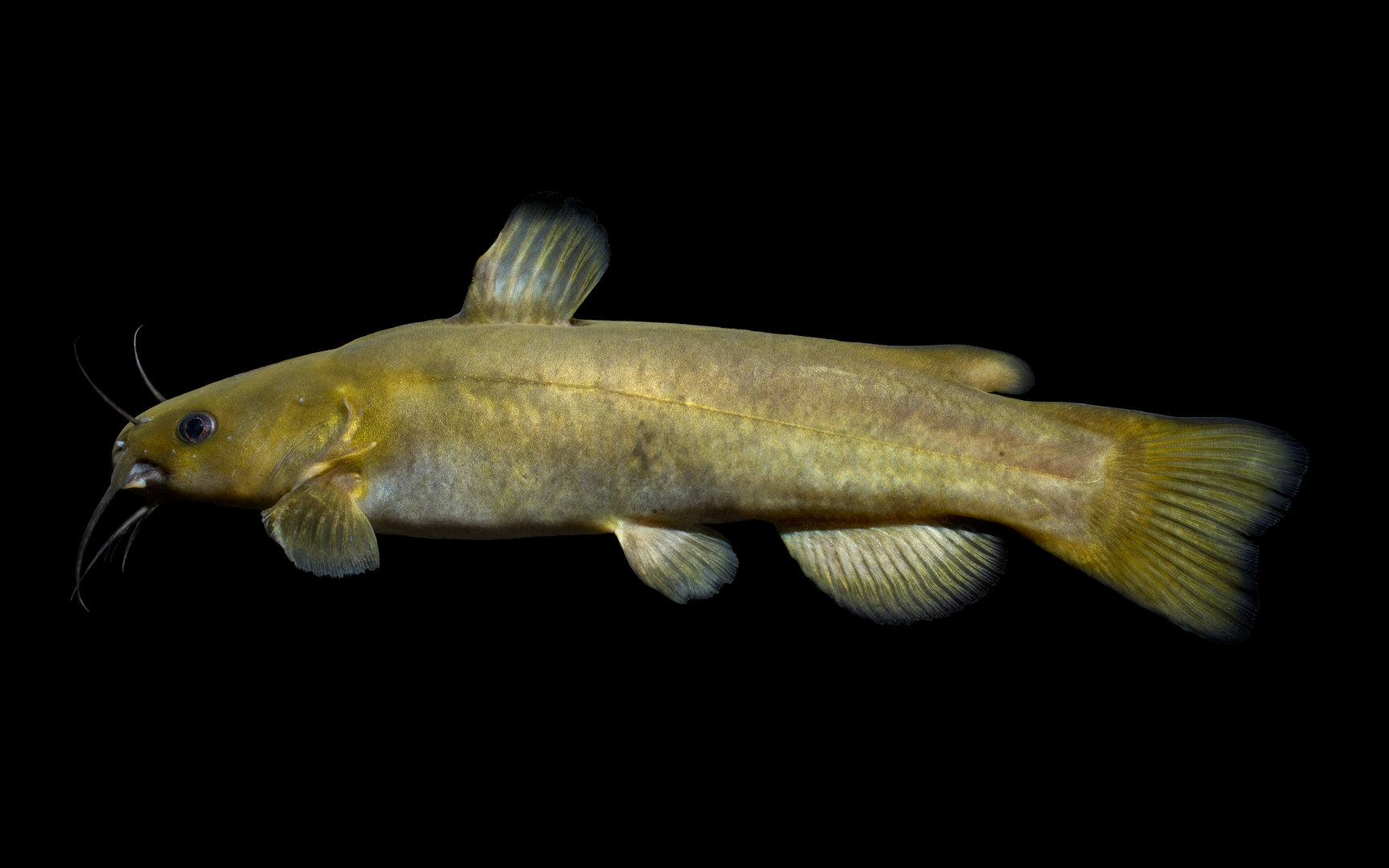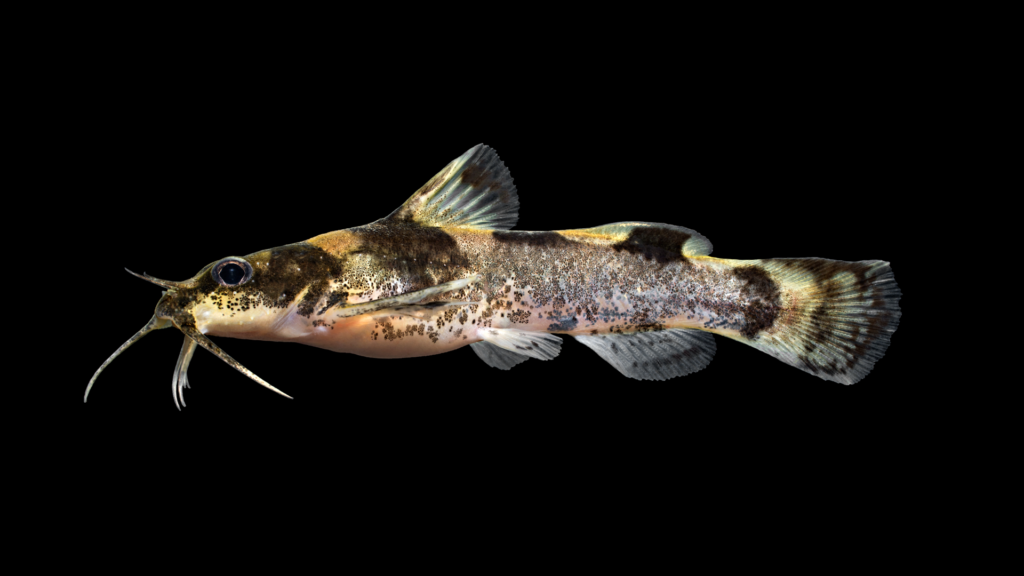By the NCFishes.com Team

There are 18 species of catfishes in North Carolina including 3 undescribed species (Table 1) (Tracy et al. 2020). You might have heard people calling them Bullheads, Mud Cats, Butter Balls, Blue Channel Cats, Madtoms, Squealers, or many more colorful colloquial names. But each species has its own scientific (Latin) name, which coincidentally actually means something (please refer to The Meanings of the Scientific Names of Catfishes, pages 9 and 10), and an American Fisheries Society-accepted common name. They are found throughout North Carolina in streams, swamps, big rivers, and reservoirs from Cherokee County in the Mountains to Dare County along the Albemarle Sound. Distributional maps for every species may be found in Tracy et al. (2020).
Table 1. Species of catfishes found in North Carolina. Common names enclosed within tickmarks (“) are scientifically undescribed species.
| Scientific Name/ American Fisheries Society Accepted Common Name | Scientific Name/ American Fisheries Society Accepted Common Name |
|---|---|
| Ameiurus brunneus, Snail Bullhead | Noturus flavus, Stonecat |
| Ameiurus catus, White Catfish | Noturus furiosus, Carolina Madtom |
| Ameiurus melas, Black Bullhead | Noturus gilberti, Orangefin Madtom |
| Ameiurus natalis, Yellow Bullhead | Noturus gyrinus, Tadpole Madtom |
| Ameiurus nebulosus, Brown Bullhead | Noturus insignis, Margined Madtom |
| Ameiurus platycephalus, Flat Bullhead | Noturus sp. “Cape Fear Broadtail” Madtom |
| Ictalurus furcatus, Blue Catfish | Noturus sp. “Lake Waccamaw Broadtail” Madtom |
| Ictalurus punctatus, Channel Catfish | Noturus sp. “Pee Dee Broadtail” Madtom |
| Noturus eleutherus, Mountain Madtom | Pylodictis olivaris, Flathead Catfish |
Catfishes range in size from the diminutive “Broadtail” Madtoms of just a few inches in length to the behemoth Blue Catfish with maximum lengths approaching 5 feet. Similarly, they may weigh just a few ounces for the smaller madtoms upwards to 150 pounds for Blue Catfish. Many species are recreationally and commercially important as delectable table fare such as Blue Catfish, Channel Catfish, and Flathead Catfish. Game species include Blue Catfish, Channel Catfish, Flathead Catfish, and bullheads, Ameiurus spp.; whereas the smaller madtom species, Noturus spp., are considered non-game species. Several species have been introduced, legally or illegally, outside their historical ranges. For example, the Margined Madtom has been collected and transported outside its native range east of the Appalachian Mountains, and used as bait for catching Smallmouth Bass, Micropterus dolomieu, in the New and Watauga River basins.

Three species are found in only one basin: 1) Mountain Madtom in the lower French Broad; 2) the “Cape Fear Broadtail” Madtom in the Cape Fear; and 3) the “Lake Waccamaw Broadtail” Madtom in the Waccamaw basin. Brown Bullhead is our most widely distributed species. It is found in 18 of our 21 basins, but there are no records of its occurrence in the Nolichucky, Savannah, or Shallotte basins (Tracy et al. 2020).
Our least speciose basin is the small, headwaters basin, the Savannah, where only Margined Madtom and Snail Bullhead are found. However, more species of catfishes, 12, are found in the Roanoke River basin than in any of the other 21 basins. Those 12 species include 5 species that have been introduced from other basins within or from drainages outside of North Carolina – Snail Bullhead, Black Bullhead, Flathead Catfish, Blue Catfish, and Channel Catfish. The seven native species in the Roanoke basin include the Margined, Orangefin, and Tadpole madtoms, White Catfish, Brown Bullhead, Flat Bullhead,and Yellow Bullhead. Seven species are considered imperiled in North Carolina: 1) State Endangered – Stonecat and Orangefin Madtom; 2) State Threatened – Carolina Madtom; and 3) State Special Concern – all three “undescribed “Broadtail” Madtom species (NCAC 2017; NCNHP 2018; NCWRC 2017).

Key characteristics for their proper identification include the shape of the caudal and anal fins; the color of the barbels surrounding the mouth; and body and fin coloration (please refer to the downloadable link at the bottom of this post – Identification Key to the Species of Catfishes (Family Ictaluridae) in North Carolina). Most species can easily be told apart from one another, with the possible exceptions of Flat Bullhead vs. Snail Bullhead and Black Bullhead vs. Brown Bullhead.
If you have troubles with your identifications, just send us (https://ncfishes.com/contact/) an e-mail and include as many quality digital photographs as you can along with all the pertinent locality descriptors so that we will know from where the fish came.